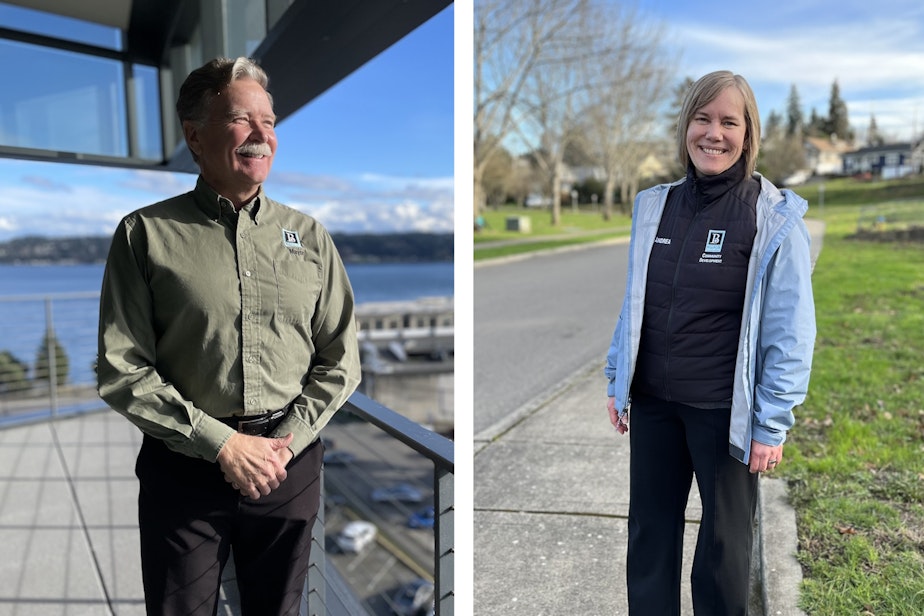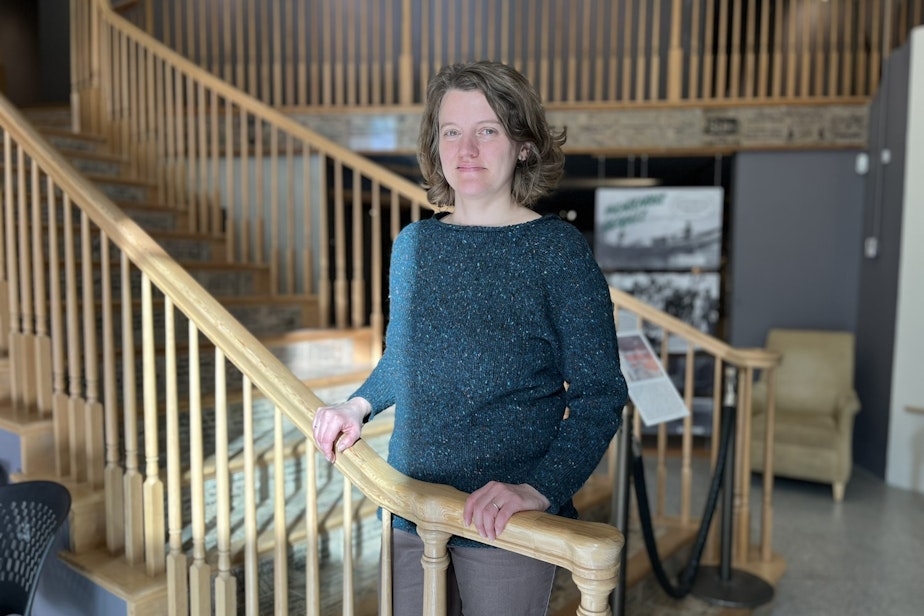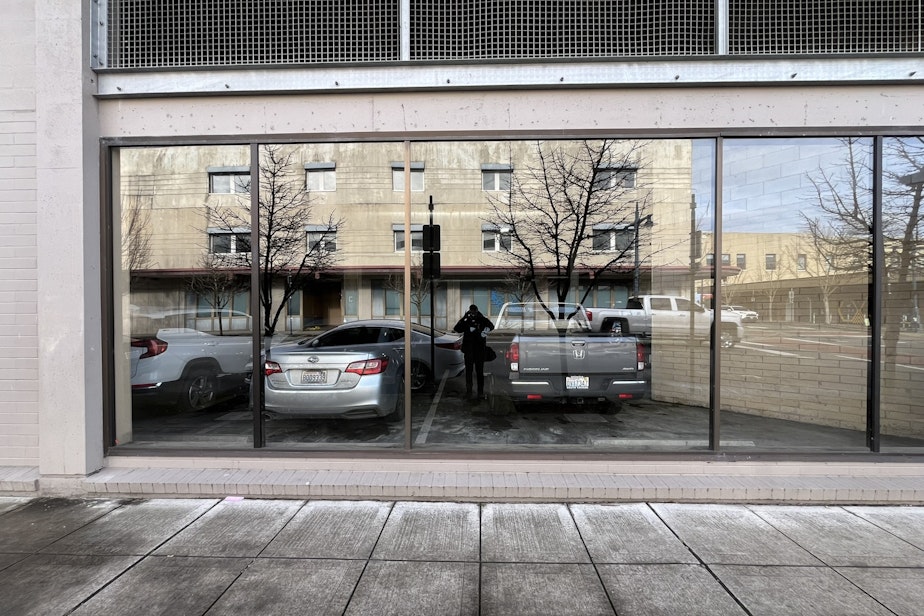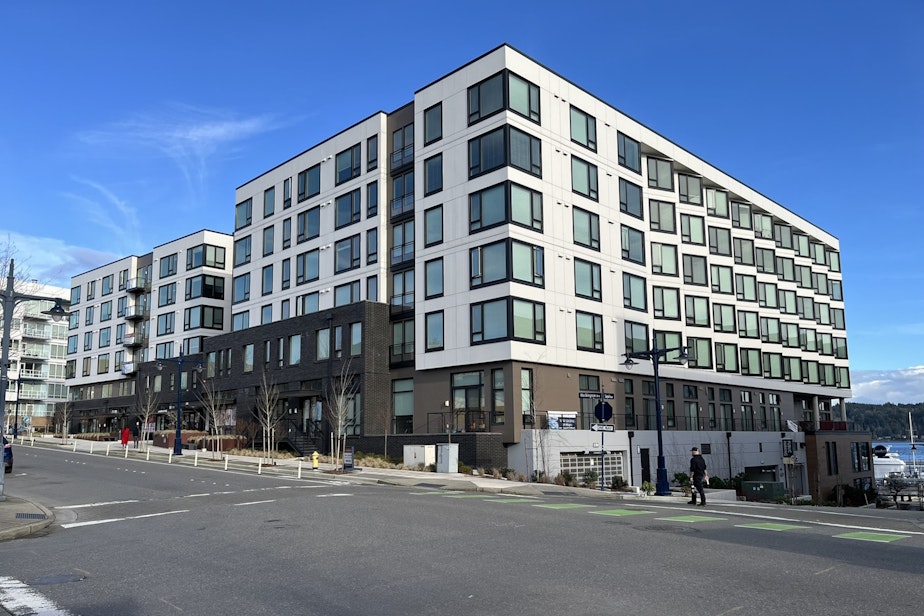Could a broken WA ferry system help cities grow more sustainably?

Unreliable state ferries have left passengers in waterfront communities stranded. Replacement boats are still at least four years away.
Meanwhile, county-run fleets of smaller, faster foot-ferries are preparing to expand, with help from the state.
And that's making some downtowns better.
The ferry route between Seattle and Bremerton used to have two ferries.
Now it has only one, due to a combination of broken down boats and crew member retirements during the pandemic.
All over Bremerton, people tell stories about the hardship this has caused.
“I’ve had filmmakers show late to their showing because the ferries didn’t run at the right time," says Amy Camp, who runs the West Side Film Festival in Bremerton. "I hate to see that, and I hate the fact that they’re being denied the chance to connect with other filmmakers and maybe make connections that lead to bigger and better films — because of the ferry schedule.”
She ends up giving out lots of complimentary tickets and merchandise to keep festival attendees happy when they miss things.
Sponsored
"Sometimes we have to make up financially for what the ferry did," Camp says.
This story comes from the latest episode of KUOW's economy podcast, Booming.
Bremerton is not alone in this hardship. And in many cases, the stakes are much higher than missing a movie screening.
On Shaw Island in the San Juan Islands, kids can't get home from school, and cancer patients can't get to their chemotherapy appointments when the interisland ferry is down.
In response to these ferry system issues, many communities are turning to smaller boats.
Sponsored

B
remerton's head planner Andrea Spencer stands at the rail overlooking the water as passengers exit and enter one of Kitsap County's small foot ferries.
This is the gravitational center of a big change that Bremerton is making. The city is building a spine of walkable streets that starts at the ferry dock, passes through downtown Bremerton on Pacific Avenue, and ends at a big park that will soon be surrounded by new apartment buildings and street-level shops.
Spencer says the foot ferries are a catalyst for that transformation. When commuters and tourists use these ferries, they generally leave their cars at home and spend more time walking around downtowns on both sides of the water.
Sponsored
"That's why we've done all this investment in trying to improve our pedestrian plazas and our pedestrian walkways within our downtown," Spencer says. ''If we had just invested in road infrastructure, we were going to have more of the same. It's going to be sprawling development. So what is this? This is a capital investment in infrastructure that helps us change our future."

Three mayors in a row have supported this transformation, Spencer says. Bremerton's current mayor, Greg Wheeler, says the foot ferries help protect natural areas outside of Bremerton because they promote growth in downtowns rather than suburban developments. Plus, they're just more practical.
"That’s a more economical way of doing marine transit, by far," Wheeler says. "The engines are less complex; they’re a more efficient use of space," because they don't need to accommodate cars.
They're also much cheaper to build than car ferries.
Sponsored
So how's that working for people?
Alex Pacifico is a middle school teacher in Bremerton. She lives in Seattle and takes the foot ferry across the Sound every weekday morning. She says she doesn't need a car in Bremerton.
"I do a lot of biking, and then my friends kind of pick me up in Bremerton — it’s all kind of centralized in downtown. So it makes it easy to get around. And then, the ferry terminal’s just right there."
Pacifico says once you get out of downtown Bremerton, it's less walkable because of how spread out things are. Few people would choose to walk down the highway to get to the Silverdale Mall, for example.
So, people who live outside Bremerton are more likely to depend on their cars.
Sponsored
“To me personally, the freedom to be able to drive is paramount because I’m busy every day," says Rick Fowler, who works at the navy shipyard. "Like today, for example: I live in Seabeck, but I have to go to Port Orchard for a business meeting. It seems like every day there’s something. There’s a honey-do-list that you have to fulfill.”
Then there's Timothy Tibbs, who often travels from the Kitsap Peninsula to the Veterans Administration Hospital in Seattle. Rather than use the ferries, which he says are hopelessly undependable, he drives 50 miles out of his way, over the Tacoma Narrows Bridge.
Tibbs says he'd take the foot ferries if he knew he could rely on buses to be there when he needs them at both ferry docks.
"Transportation's got to be more freely available," he says. "Around here after dark and early in the morning, it's hard to get on a bus and go anywhere in Bremerton," because the buses don't run frequently enough for his liking, he adds.
T
he story of Washington's ferries is like that of any other big piece of transportation infrastructure. It's expensive to haul cars across the sea, just as it's expensive to maintain and expand the freeways and bridges that carry numerous cars across the landscape.
Urban planners often say it's usually more efficient to build walkable communities centered around public transit than around infrastructure designed exclusively for cars.
It's useful to look at history to understand how this applies to ferries.
The big state ferries that carry cars are part of the highway system. They even have highway numbers. The Bremerton-Seattle route, for example, is State Route 304.
When the state bought a fleet of Black Ball Line ferries around 1950, the ferry service was seen as temporary until bridges could be built across Puget Sound. But funding for that construction never came.
In contrast, the smaller boats serving Bremerton are operated by Kitsap County's transit agency. The agency tries to align bus schedules with ferry arrival times so passengers can transfer. You can pay for a foot ferry using an ORCA (transit) card.
They have more in common with the historic "mosquito fleet" of smaller boats that once served waterfront communities up and down Puget Sound.
While those boats carried freight as well as foot passengers, the communities that grew around ferry docks were essentially small, walkable communities, according to Mary Phelps at the Kitsap History Museum in Bremerton.

“That really started creating the personality of Kitsap County, where towns were cropping up on these boat harbors...and we didn’t have roads for a very long time," she says. "We didn’t have roads [connecting waterfront towns] really until the 1940s, 1950s era.”
One of the smaller boats from that historic mosquito fleet, the Carlisle II, still operates between Bremerton and Port Orchard, as a backup boat for when the hybrid electric foot ferry is being serviced. It's also a designated floating museum. So when Phelps commutes to her museum job in Bremerton, she says, "I'm riding in a museum to get to a museum." It's a reminder of how the past is providing a blueprint for the future.

M
aking the switch is difficult, though, because we've spent decades — in some cases a century — building decentralized infrastructure for cars.
That infrastructure and the people who depend on it won't disappear just because leaders are more interested in promoting urban development.
This introduces one of the central challenges of elected leaders and public agencies today: How to spend money wisely without abandoning the people who've come to depend on that decentralized infrastructure.
"We can't make everyone happy," says Sanjay Bhatt, a spokesperson for Kitsap Transit. "We have to try to focus the resources we have where we can serve the greatest good," which means urban transit routes serving the most people.
At the same time, "We have an affordability crisis of housing in this country, and a lot of people can't afford to live in the urban core because they can't afford to buy a home in that core," Bhatt adds.
And to the extent lower income families can't afford the urban core, access to transit becomes a social justice issue.
Kitsap Transit is trying to expand access and reduce the cost of decentralized suburban routes by building park-and-ride lots that people can drive to and then take a bus into town, or kiss-and-ride spots where people in cars can drop off their partners near a bus stop.

Elected leaders like Bremerton Mayor Greg Wheeler know that suburban residents are voters. So he's careful to emphasize that he absolutely wants the missing car ferry on the Bremerton route to be replaced.
But at the same time, he sees foot ferries and neighborhoods connected to downtown via pedestrian infrastructure and transit as the place to channel future growth.
That's the roadmap many elected leaders are following today: building a new, more efficient way of living on top of the old one.
Hear more about ferries on the latest episode of KUOW's economy podcast, Booming. You may also listen using the player below.




